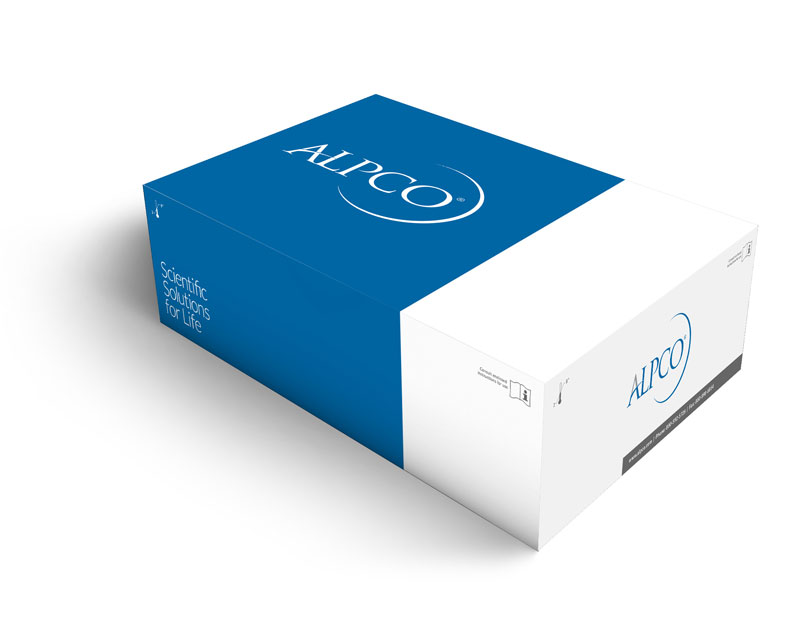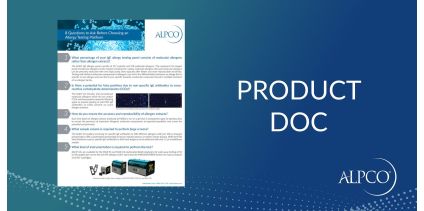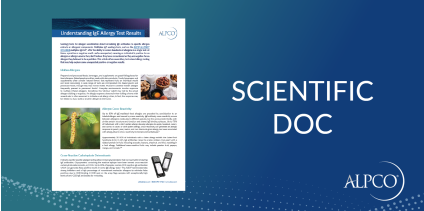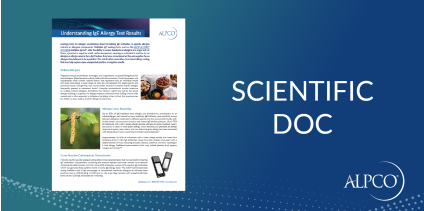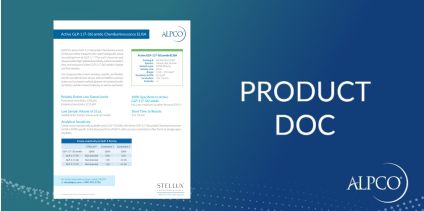Anti-CaSR lgG ELISA (Anti-calcium sensing receptor IgG ELISA)
$1,069.00
Catalog
43-CASHU-E01
Anti-CaSR lgG ELISA is for the quantitative determination of anti-CaSR
(calcium sensing receptor) IgG in serum, plasma, and tissue extract. Research Use Only. Not for Use in Diagnostic Procedures.
Species
Human
Regulatory Status
Research Use Only. Not for Use in Diagnostic Procedures.
Product Distribution
Available Worldwide
Range
10 - 270 U/mL
Sensitivity
2.5 U/mL
Sizes
96 Wells
Sample Types
Plasma, Serum
Inc Time Hour
1
Inc Time Minute
50
Inc Time Overnight
No
Inc Time See Protocol
No
Sample Size
10
Detection
Colorimetric
The human calcium-sensing receptor (CaSR) is a 1078 amino acid cell surface protein, which is
predominantly expressed in the parathyroid glands and kidney. It is a member of the family of G proteincoupled receptors. The CaSR allows regulation of parathyroid hormone (PTH) secretion and renal tubular
calcium reabsorption in response to alterations in extracellular calcium concentrations.
This ELISA is designed, developed, and produced for the quantitative measurement of human anti-CaSR autoantibody (IgG type) in test samples. The assay utilizes the enzyme-linked immunosorbent technique with selected immunogenic extracellular CaSR antigen and HRP-labeled human IgG specific detection antibodies. Assay standards, controls, and prediluted samples are added to the wells of a microplate which is coated with a highly purified human CaSR extracellular antigen. After the first incubation period, the CaSR antigen on the walls of the microplate wells absorbs or captures human anti-CaSR autoantibody in the sample and unbound proteins in each microplate well are washed away. An HRP conjugated polyclonal anti-human IgG antibody is added to each microplate well and a link of “CaSR antigen - human anti-CaSR autoantibody - HRP conjugated detection antibody” is formed. The unbound detection antibody is removed in the subsequent washing step. HRP conjugated detection antibody bound to the wells is incubated with a substrate solution in a timed reaction, and then measured in a spectrophotometric microplate reader. The enzymatic activity of the detection antibody bound to the human anti-CaSR autoantibody on the walls of the microplate wells is directly proportional to the amount of this autoantibody in the sample. A standard curve is generated by plotting the absorbance versus the respective autoantibody concentration for each standard on point-to-point or cubical scales. The concentration of human anti-CaSR autoantibody in the samples is determined directly from this standard curve.
This ELISA is designed, developed, and produced for the quantitative measurement of human anti-CaSR autoantibody (IgG type) in test samples. The assay utilizes the enzyme-linked immunosorbent technique with selected immunogenic extracellular CaSR antigen and HRP-labeled human IgG specific detection antibodies. Assay standards, controls, and prediluted samples are added to the wells of a microplate which is coated with a highly purified human CaSR extracellular antigen. After the first incubation period, the CaSR antigen on the walls of the microplate wells absorbs or captures human anti-CaSR autoantibody in the sample and unbound proteins in each microplate well are washed away. An HRP conjugated polyclonal anti-human IgG antibody is added to each microplate well and a link of “CaSR antigen - human anti-CaSR autoantibody - HRP conjugated detection antibody” is formed. The unbound detection antibody is removed in the subsequent washing step. HRP conjugated detection antibody bound to the wells is incubated with a substrate solution in a timed reaction, and then measured in a spectrophotometric microplate reader. The enzymatic activity of the detection antibody bound to the human anti-CaSR autoantibody on the walls of the microplate wells is directly proportional to the amount of this autoantibody in the sample. A standard curve is generated by plotting the absorbance versus the respective autoantibody concentration for each standard on point-to-point or cubical scales. The concentration of human anti-CaSR autoantibody in the samples is determined directly from this standard curve.

